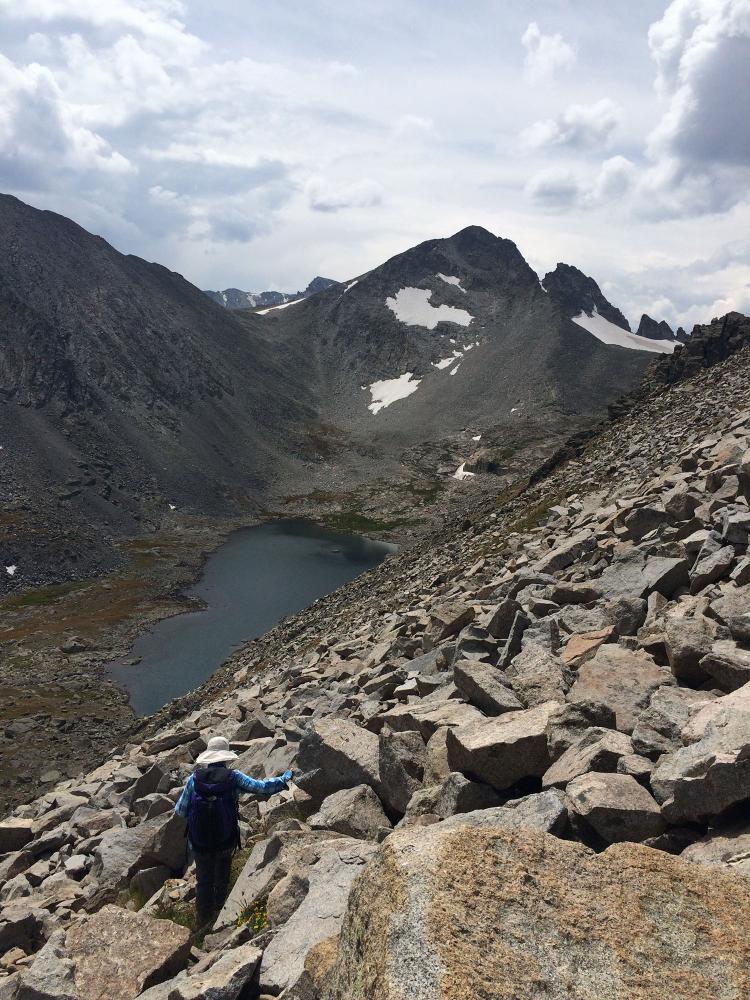Diversity begets diversity in the alpine
As plant communities become more diverse and complex in the high alpine, so to do soil microorganisms, according to a new CU Boulder study.
Increases in plant diversity and complexity above ground leads to a greater soil biodiversity below ground, according to new research from the University of Colorado Boulder.
This study, which is out today in Ecology, looked to the high alpine environment of the Rocky Mountains, where plants are increasingly colonizing new territory due to climate change, and found that as plants move into these new environments, the soil diversity seems to move with them, documenting for the first time in the field this plant-soil diversity relationship.

The Colorado alpine is undergoing massive shifts thanks to a changing climate—and some of them might not be bad. Photograph from Dorota Porazinska.
"We are really excited that this system, being so simple, actually does show this connection," said Dorota Porazinska, the lead author of the study and a research associate in the Department of Ecology and Evolutionary Biology at CU Boulder. “If there was a place where we would expect to see a relationship between the diversity of plants and microbes, that would be in this system. It’s a nice delivery that, yes, indeed, it’s present."
It is well established that ecosystems, including plants and soil microbes depend on each other in much the same way as humans rely on their own internal microbiome for health and well-being. What is less known, however, is how the diversity of one affects the diversity of the other. While experimental results have suggested that there is indeed a connection, nothing solid had thus far been observed in nature.
This research, however, found otherwise by looking at an environmental blank slate: the high alpine of Colorado.
As the climate changes, high alpine environments in Colorado—those zones between 12,000 and 14,000 feet above sea level—have been experiencing significant environmental shifts. Where there were once only barren soils, there are now new mosses, lichens and plant communities fostered by a longer growing season.
For the study, the researchers collected a variety of plant and soil samples along a natural environmental gradient from such an environment in the Front Range of the Rocky Mountains. They then analyzed the soil microbiota (the organisms living within the soil), the carbon and nitrogen in the soil (required nutrients for plant growth) and the soil moisture to see if there were any relationship between the plants, soil diversity and the broader soil environment.
They found that, at least in this high alpine environment, there is a strong connection between plants moving in and the soil undergoing complex changes in response.
"Diversity begetting diversity is something that hasn’t really been proven," said Steven Schmidt, a co-author and a professor in the Department of Ecology and Evolutionary Biology. "And these results really show that it is happening and that the relationship exists in nature, and not just in some laboratory experiments."
The National Science Foundation provided funding for the research. Other co-authors include Clifton P. Bueno De Mesquita, Sam A. Sartwell, Jane G. Smith, Caitlin T. White and Katharine N. Suding of CU Boulder and researchers from Tulane University, University of California, Riverside and King Ecological Consulting in Knoxville, Tennessee.

